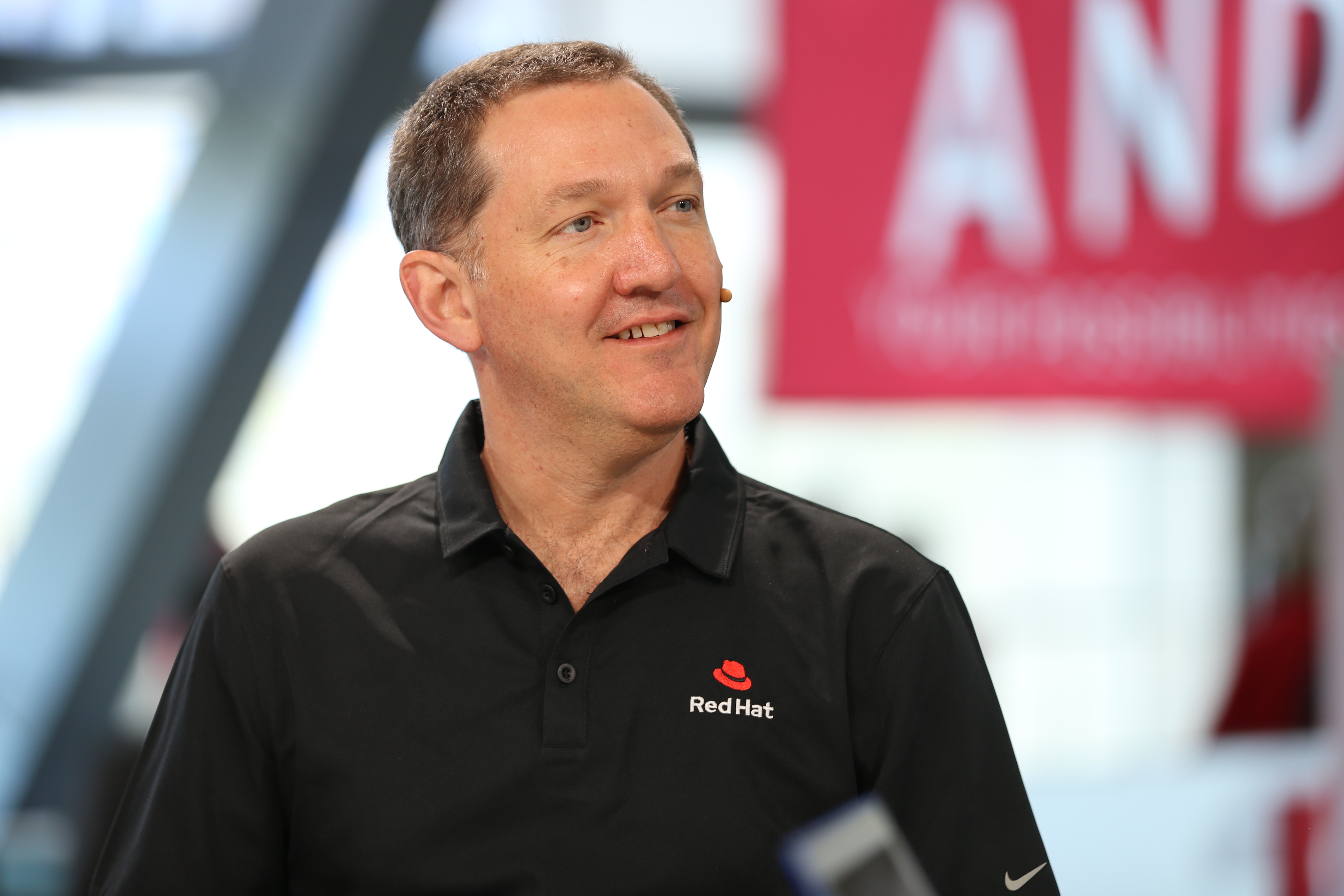 INFRA
INFRA
 INFRA
INFRA
 INFRA
INFRA
Open source is Red Hat Inc.’s raison d’etre. The company’s acquisition by venerable technology elder IBM moved a step closer to completion this week as the Department of Justice approved the $34 billion deal, sending a clear signal that open source is here to stay.
“We are all about making open source the default choice in the world,” said Jim Whitehurst (pictured), chief executive officer at Red Hat. “If we think we’re going to change the world, how better can we propel this forward?”
Whitehurst spoke with Stu Miniman and John Walls, co-hosts of theCUBE, SiliconANGLE Media’s mobile livestreaming studio, during the Red Hat Summit in Boston. They discussed Red Hat’s acquisition by IBM set to close in the second half of 2019, the release of RHEL 8 and the Azure Red Hat OpenShift collaboration (see the full interview with transcript here). (* Disclosure below.)
IBM CEO Ginni Rometty took to the stage with Whitehurst this week at the Summit to discuss the companies’ joint future. Rometty assured Red Hat evangelists that IBM had positive plans for the company.
“I’m not buying them to destroy them by any stretch. I want them to be successful,” she said.
IBM is investing in Red Hat to the tune of $34 billion, making a clear statement about the importance of open source to the future of IBM, according to Whitehurst. “I can’t imagine a better validation,” he said.
Another key revelation at this week’s Summit: Red Hat Inc. and Microsoft Corp. have buried the hatchet, partnering to bring Azure Red Hat OpenShift to customers. Azure Red Hat OpenShift has reached general availability, which showcases a collaborative culture between Microsoft and Red Hat and brings hybrid to RHEL 8. Just five years ago, the thought of the rival infrastructure software providers working closely on a joint project would have been laughable. But just as open source has gained widespread acceptance, so its collaborative ethos is transforming culture and bringing competitors together for the great good of all.
“We both recognized we need to serve our customers in the best possible way, and what that clearly means is working closely together,” Whitehurst said.
Although adding a SQL server on Red Hat Enterprise Linux doesn’t sound revolutionary, it is “a big deal,” according to Whitehurst. RHEL 8, released last week, is “able to deliver a hybrid cloud with a seamless experience with OpenShift from on-premise to Azure,” Whitehurst added.
While Red Hat and Microsoft are working together as partners, IBM’s acquisition of Red Hat means a merger between the companies, with IBM holding the upper hand. Forcing Red Hat to become corporate was not an option, but neither could Big Blue totally shrug off its more traditional mode of operation. Both companies acknowledged from the beginning that their very different cultures could cause problems. Agreeing to disagree (culturally at least), the companies plan to keep their ways of working unique and separate.
“We can celebrate the strengths of each other’s cultures, and the key in this is to not assume that there’s one culture that’s right for everything,” Whitehurst said.
This is a lesson that every company needs to learn as business makes the transition to operating in the open, hybrid era. With open-source technology now trusted, 90% of the executives Whitehurst meets are concerned about adjusting to working with new technology on a cultural level.
“We call it the open-source way … which is ‘beyond the code’; it’s meritocracy and how you get people to work together in collaboration,” Whitehurst said.
Here’s the complete video interview below, part of SiliconANGLE’s and theCUBE’s coverage of Red Hat Summit 2019. (* Disclosure: TheCUBE is a paid media partner for Red Hat Summit. Neither Red Hat Inc., the sponsor for theCUBE’s event coverage, nor other sponsors have editorial control over content on theCUBE or SiliconANGLE.)
Support our mission to keep content open and free by engaging with theCUBE community. Join theCUBE’s Alumni Trust Network, where technology leaders connect, share intelligence and create opportunities.
Founded by tech visionaries John Furrier and Dave Vellante, SiliconANGLE Media has built a dynamic ecosystem of industry-leading digital media brands that reach 15+ million elite tech professionals. Our new proprietary theCUBE AI Video Cloud is breaking ground in audience interaction, leveraging theCUBEai.com neural network to help technology companies make data-driven decisions and stay at the forefront of industry conversations.